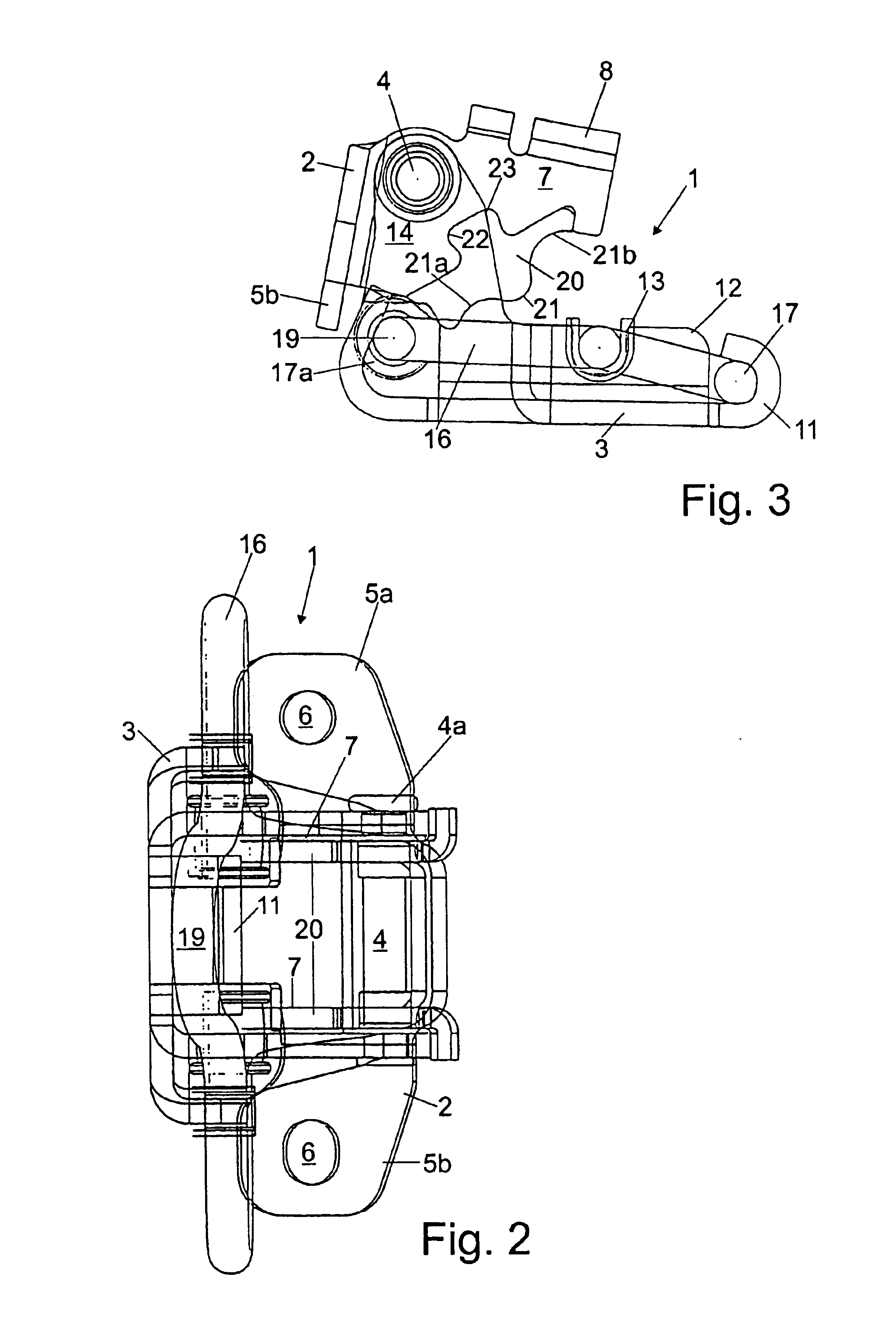Door hinge
a door and hinge pin technology, applied in the field of door hinges, can solve the problems of different loads on the curved path, adverse effect on its practical use, and increased wear of the hinge pin and noise-reducing characteristics,
- Summary
- Abstract
- Description
- Claims
- Application Information
AI Technical Summary
Benefits of technology
Problems solved by technology
Method used
Image
Examples
Embodiment Construction
The door hinge 1 shown in FIG. 1 to 3 comprises a first hinge half 2, which is to be fastened to a door pillar of a vehicle body, and a second hinge half 3, which is to be fastened to the door of a vehicle, the first hinge half 2 and the second hinge half 3 being connected to each other via a hinge pin 4 which is held fixedly on the second hinge half 3 and rotatably on the first hinge half 2 with a running fit in the respectively assigned end joints. It can be seen that the two hinge halves 2, 3 in each case have two end joints designed for the pinning together, the hinge pin 4 being designed with a head 4a which forms a stop at one end and at its other end is secured in a known manner by riveting.
The first hinge half 2 has fastening tabs 5a, 5b which are directed outward on both sides, in each case have a hole 6 passing through them and are intended for the fastening of the hinge half 2 to the door pillar of a motor vehicle body. The end-joint region in each case with a gudgeon of ...
PUM
 Login to View More
Login to View More Abstract
Description
Claims
Application Information
 Login to View More
Login to View More - R&D
- Intellectual Property
- Life Sciences
- Materials
- Tech Scout
- Unparalleled Data Quality
- Higher Quality Content
- 60% Fewer Hallucinations
Browse by: Latest US Patents, China's latest patents, Technical Efficacy Thesaurus, Application Domain, Technology Topic, Popular Technical Reports.
© 2025 PatSnap. All rights reserved.Legal|Privacy policy|Modern Slavery Act Transparency Statement|Sitemap|About US| Contact US: help@patsnap.com



